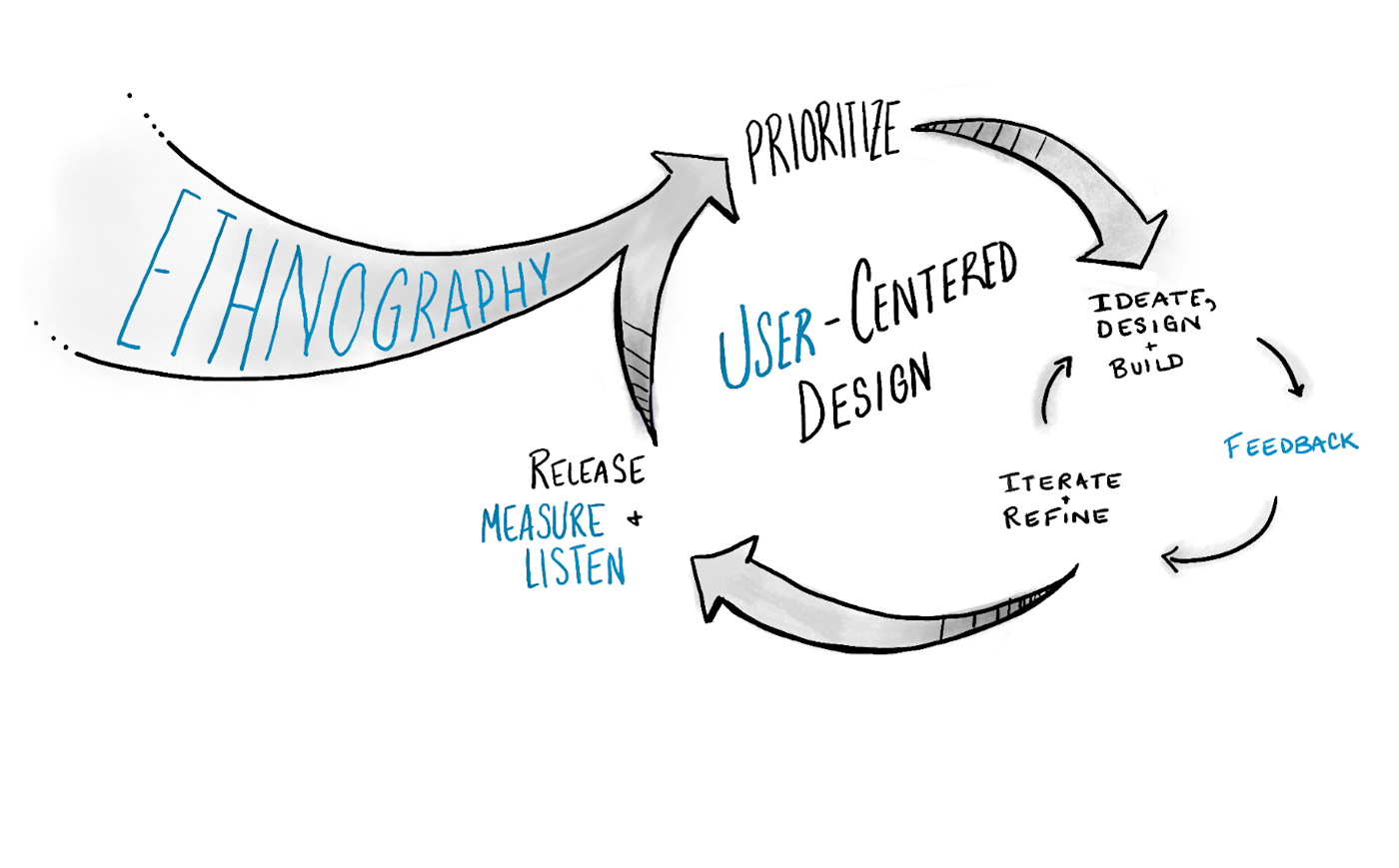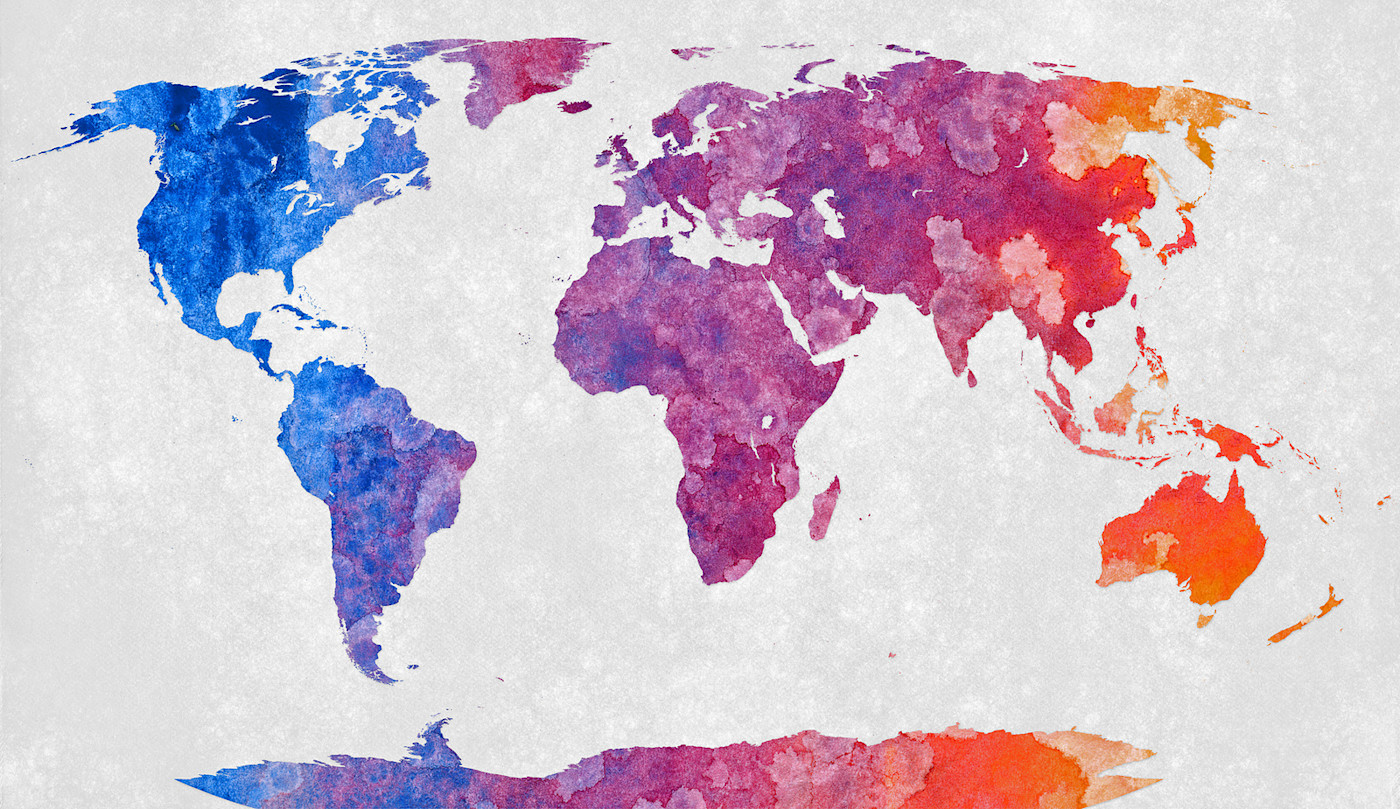"The kitchen of the future" has been a buzzword for decades.
In 1956, General Motors debuted the "Kitchen of Tomorrow," both as product placement and an attempt to imagine how technology could transform routine daily tasks like cooking. With the push of a few buttons (and a few dance breaks), a perfectly baked cake appears, as if by magic.
Over half a century later, Ikea's recent attempt to imagine the kitchen of 2025 took a perhaps more practical approach, with smart tables that can recognize food, suggest recipes and give advice on how to cut and prepare ingredients.

Both concepts aim to free people from spending forever over a hot stove, but the notion that cooking is a chore misses the mark, said Mikkel Rasmussen, partner at human sciences consulting firm ReD Associates, during a talk at Google.
An anthropologist would tell you that the act of cooking is incredibly complex. Our cooking habits are influenced by our family, social class and nationality. Cooking takes skill and improvisation, and we take pride in the things we've cooked.
Having technology that improvises or decides cooking plans for you ignores the fact that many people enjoy cooking.
If you make technology that gets people wrong, Rasmussen says, the technology will fail.
That is where anthropologists can make a big difference on the decisions of product designers and makers.
What is Anthropology?

The Greek word "anthropos" means man, and anthropology literally translates to the "science of man."
Anthropology's signature method is ethnography—the in-depth analysis of a culture, group or society through observation that results in thorough written documentation or field notes. We're most familiar with the National Graphic portrayal of anthropologists, deciphering long-lost cultures by studying artifacts and interviewing still-living descendants.
Ethnography isn't just for studying far-away tribes in Borneo, though. Anthropologists are using the same methods to help businesses understand their customers and better serve them.
Anthropologists have been studying businesses at least since the 1930s, typically as more of an academic pursuit. That's changed the past few decades, as large corporations have started investing in anthropologists, either through consulting firms or by hiring their own teams. Through these collaborations, anthropologists have directly influenced products you use every day, including:
Smartphones: Google hired anthropologists to observe people using mobile devices to understand how to create better mobile interactions by looking at why people use their phones, not just what they do on them.
Cleaning Supplies: Anthropologists working with Procter & Gamble observed people cleaning floors, and noticed that cleaning floors included a lot of time spent cleaning the mop itself. This lead to the development of the Swiffer, which has remained one of P&G's most popular products with over $500 million in annual sales.
Software: Adobe's Photoshop team worked with an anthropologist to facilitate conversations with designers, helping the team better understand design workflows and pain points. The research even helped spark the idea for one of Photoshop's latest features: artboards.
Charles Peterson, an anthropologist on the Photoshop team, described his work as learning about people—and then applying that knowledge to products.
"I do fieldwork and spend a lot of time with people," says Peterson. "Immersion is key, and connections and empathy flow from it, letting me understand what makes folks tick. Then, working from that place of empathy, I become an advocate and help build stuff ."
While an anthropology team studying a remote culture might author a book about local customs, a business anthropology team turns their understanding of people into product ideas and recommendations that shape how products are used. That's where anthropology is so valuable for business.
How Ethnography Fills Research Gaps

Talking about yourself is difficult. It's easy to be self-conscious in answers, or present the "ideal" version of yourself instead of telling the absolute truth. These shortfalls and more limit the effectiveness of traditional market research methods such as consumer surveys and focus groups.
Surveys and focus groups "are highly artificial settings," says Dr. Allen Batteau, associate professor of business and industrial anthropology at Wayne State University. "You scarcely get beneath the surface of what's motivating the consumer."
Even when you do get some answers, people aren't always reliable when reporting their preferences or representing actual behavior.
In one study on driver competence, the majority of participants reported themselves as more skillful and less risky than the average driver. But observing drivers in action tells a different story. Anthropology students at the University of North Texas observed participants driving, and witnessed drivers talking on the phone, talking to passengers, eating, changing music, checking the dashboard, and more—all activites that could be considered risky while driving.
Observing people and cultures to get an "insider's perspective" gives us a far more realistic picture of how people behave in their natural environments than simply asking questions.
"Ethnography is a very efficient tool to collect data about things people can't or don't know how to talk about," says Christian Madsbjerg, a partner at ReD Associates. "Instead of taking people's answers for granted, you observe and try to interpret why people are doing what they're doing."
Traditional market research methods assume people know what they want and need, are aware of their intentions and stay constant no matter the mood or context they're in. Ethnography, on the other hand, allows researchers to witness the narrative of people's lives in action and draw meaning from how people work, live and play.
User research and testing can be immensely helpful for providing direction, but those situations often take people out of their natural environments, which could affect behavior. An anthropologist would instead observe how people are using a product in their daily life, drawing conclusions about the best improvements to make based on real-life use-cases.
What Anthropologists Can Teach Us
Madsbjerg cautions against attempting anthropological research without theoretical background and training (he likens it to a someone who's not an engineer trying to build a bridge), but there's still a lot to learn from how anthropologists think and approach their work.
You could hire an anthropologist to direct your research, but before taking that leap, here are some of the best lessons you can take from anthropology to help you to more effectively learn about, interact with and serve your customers and users.
Look at the Whole

Anthropologists use a holistic approach—they examine how everything is interrelated.
The development of Go-Gurt, the popular yogurt in a tube, is a good example.
Instead of starting development with a product idea, General Mills hired anthropologist Susan Squires to rethink breakfast. Squires started by spending time with families in their own homes.
"We looked at moms, dads, kids, grandparents and teachers, and followed kids through day to figure out where the challenges were in terms of eating," says Squires.
One morning, Squires was observing a family at 6:30 A.M. while a mom prepared a nutritious breakfast for her two young sons. While mom was distracted talking about how she only fed her kids healthy foods, one son ignored the food entirely, entranced by morning cartoons. The other son poured himself a bowl of sugary cereal, unnoticed by mom.
When Squires asked the boy how he liked the cereal, he responded, "It makes the milk turn blue."
Squires discovered that dad bought the cereal because it was like the "stuff he ate when he was a kid."
It's not that the mom was lying, Squires says. "Her aspiration really was to give her kid a healthy meal. But within the whole system, that wasn't happening."
Through observing the entire morning routine and each person's part in it, Squires realized whatever General Mills developed had to be somewhat healthy, fun for kids and something dads would go along with, too. Thus, Go-Gurt—a more fun approach to yogurt—was born.
Practice How You Listen

Anthropologists spend years in the field practicing the art of listening.
"To hang around in an unfamiliar setting and make useful observations is extremely difficult," Batteau says. "The whole discipline of listening and observing is the sort of thing you can really only learning by doing. The work is really a right of passage for anthropologists."
For his dissertation, Batteau did fieldwork in eastern Kentucky. Among other questions, he would ask locals "Have you ever lived up north?"
"The typical answer was 'nope,' but somehow I sensed they had something else on their mind," says Batteau. "I kept my mouth shut and waited. Half a minute later, they'd say something like 'But I did work up in the factories in Detroit for 10 years.'
"If I had just checked off 'no' on my survey sheet, I would have missed key information."
The whole discipline of listening and observing is the sort of thing you can really only learning by doing
Dr. Allen Batteau
Patience and good listening skills, he says, gained him much better insight. It takes a longer, but pays off in spades.
Be Aware of the Lenses You Look Through

Anthropologists pride themselves on being objective and mindful of their own perspectives and biases. When it comes to your customers, forgetting that you and your business look at the world through certain lenses can have damaging consequences.
For example, colors carry different meanings for different cultures, writes David A. Ricks, author of Blunders in International Business.
The color green is often associated with disease in countries with dense jungles, but for the French, Dutch and Swedes, it's associated with cosmetics. Blue can stand for anything from calmness and serenity to sadness, even in the same culture.
When United Airlines began offering flights to Hong Kong, they handed out white carnations to passengers without realizing that in some Asian cultures, white carnations represent death, bad luck or mourning. They quickly switched to red carnations.
Names are important, too. Ford was puzzled by slow sales after it released its popular "Comet" model in Mexico under the name "Caliente"—that is, until they discovered the word "caliente" in Mexico was slang for streetwalker.
Data Before Assumptions

When anthropologists head into uncharted territory where no theory exists, they rely on "grounded theory"—they form a theory grounded in the data they observe. Instead of forming a hypothesis from the start, researchers first gather data about a phenomenon and see which patterns emerge.
In one case documented in the Harvard Business Review, a major European brewing company conducted market research and competative analysis to find why bar and pub sales were falling—and when that failed, they turned to anthropologists. The anthropologists observed bar owners, staff and regulars without forming a hypothesis first. After analyzing video, photographs and field notes, they began to see patterns.
One major realization was that bar owners didn't value promotional materials the way the brewing company expected. In one bar, a researcher observed materials shoved inside a cupboard and labeled "box of crap". Then, despite being the main channel for sales, servers didn't know much about the products and didn't care to learn more.
Armed with these observations, the brewing company ditched its one-size-fits-all promotional materials for customized merchandise. It trained its salespeople to understand each bar owner better, and it created a training program for bar staff to help them get to know the brand.
After two years, sales bounced back and continued to grow, thanks in large part to the extra training they would never had added without anthropologists' observations.
How to Add Anthropology to Your Own Work
Google, General Mills, and other Fortune 500-level enterprises can afford to hire top-notch consulting firms or form their own team of social scientists, but anthropology isn't out of reach for smaller teams and startups.
As business and design anthropology becomes more popular, recent grads with the right tools and skills are looking for work, especially in the tech industry. If you're interested in hiring an anthropologist, Squires says college anthropology programs are always looking for partners or recommendations for recent grads. Her students at the University of North Texas often work with startups under her supervision.
For other anthropology contacts, you can also reach out to the National Association for the Practice of Anthropology or the American Anthropological Association—or similar organizations in your own country.
Or, to start out, you can try to apply these anthropology principles in your work to make your research more meaningful. Take time to listen and observe, and form your theories and ideas based on what you see instead of what you want to see. And above all, have empathy for your customers and users—they're the ones who are using your products and services, and who possess the greatest insights into what can make them better even if they don't know it yet.
It's more important than ever to "get people right," and we're likely to see more businesses turning to anthropologists to understand who their customers are and what they really want. Get a head start, and your own products, customer satisfaction, and bottom line will show the results.
Further Reading
Also on the Zapier Blog: 14 Resources for User Onboarding and User Interface Inspiration
Special thanks to Dr. Allen Batteau, Christian Madsbjerg, and Dr. Susan Squires for their contributions to this article.
Credits: City life photo courtesy Kevin Case. World Map graphic by Nicolas Raymond and Lara Mukahirn via Flickr; Kitchen concept photo by IKEA and IDEO; National Geographic photo by aliceson via Flickr; Photoshop anthropology process graphic via Charles Pearson and Bradee Evans; Cereal photo by Maia B via Flickr; Listening photo by Scott Johnson via Flickr; Data photo by r2hox via Flickr.





